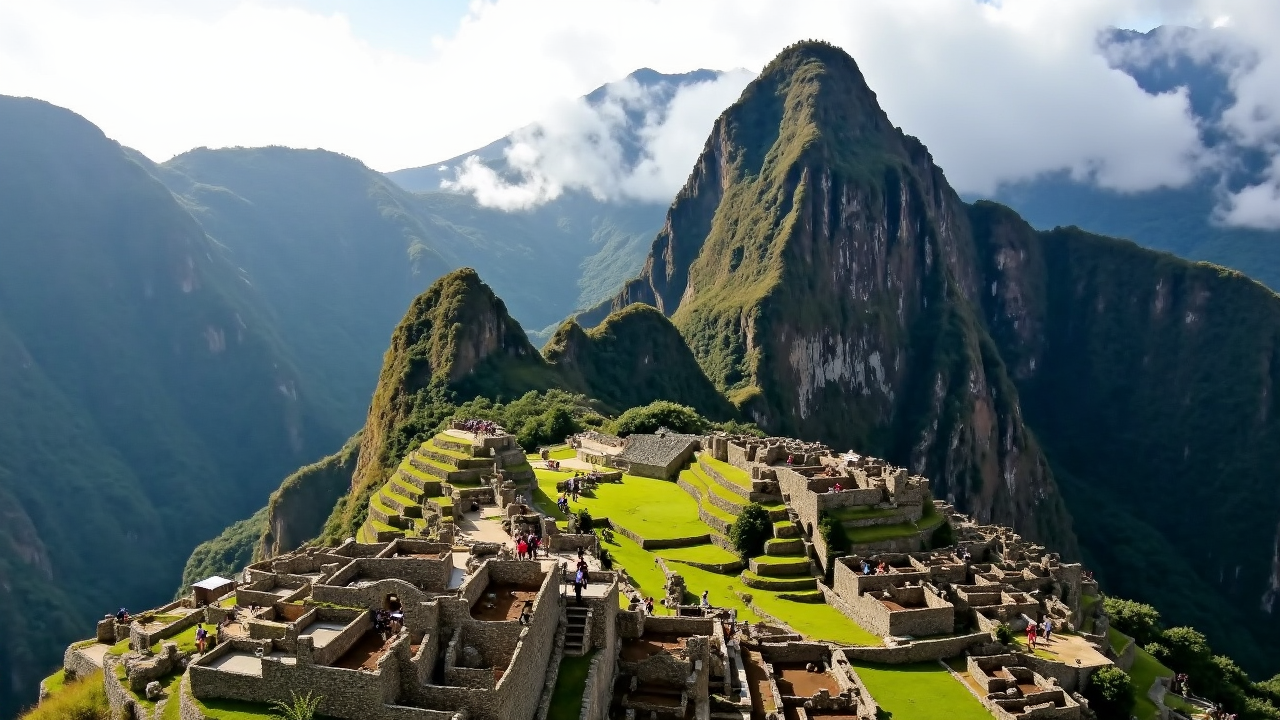A Journey Through the History of Machu Picchu
Imagine standing amidst the clouds in a remote corner of Peru, surrounded by stunning mountain vistas and mysterious stone structures. This is Machu Picchu, an ancient Incan city that has fascinated travelers and historians alike for centuries. In this blog, we’ll explore the rich history of Machu Picchu, uncover its secrets, and offer tips for anyone planning to visit this remarkable site.
The Origins of Machu Picchu
Machu Picchu was built in the mid-15th century during the height of the Incan Empire. It is believed to have been constructed around 1450 AD under the reign of Emperor Pachacuti, one of the most influential leaders of the Incas. The city served as a royal estate and a strategic military site, responsible for overseeing the surrounding regions.
While the precise purpose of Machu Picchu remains a subject of scholarly debate, many archaeologists agree that it was a ceremonial center and a symbol of Incan ingenuity. The site integrates seamlessly into its environment, showcasing the Incas’ advanced engineering skills.
Discovery and Rediscovery
For centuries, Machu Picchu remained hidden from the outside world, cloaked in myths and secrets. It was largely forgotten after the decline of the Incan Empire, which was conquered by the Spanish in the 16th century. Interestingly, the Spanish conquistadors never reached Machu Picchu, which probably contributed to its preservation.
The famous American explorer and historian Hiram Bingham rediscovered Machu Picchu in 1911. While local Quechua farmers still knew about the site, Bingham’s expedition brought international attention to this extraordinary archaeological treasure. Since then, Machu Picchu has become one of the most visited tourist destinations in South America.
Architectural Marvels of Machu Picchu
One of the reasons Machu Picchu is so fascinating is its architecture. The Incas mastered stonework, fitting stones together so precisely that mortar was unnecessary. This precise stone-fitting has allowed many structures to withstand earthquakes over the centuries.
Key features include:
- The Terraces: Ingeniously built terraces helped prevent landslides and created arable land in the steep terrain.
- The Temples: The Temple of the Sun and the Room of the Three Windows are notable religious structures with astronomical alignments.
- The Intihuatana Stone: This ritual stone is believed to have been used for astronomical and ceremonial purposes.
- The Plaza: The central open area where social gatherings and ceremonies likely took place.
The site’s layout reflects the Inca’s deep understanding of their environment, combining practicality with spiritual significance.
The Significance of Machu Picchu in South American History
Machu Picchu is more than just a beautiful ruin; it is a testament to the impressive capacity of the Inca civilization. It provides insights into their social organization, architectural skills, and spiritual beliefs.
During its peak, Machu Picchu was probably a royal estate or an important religious site. Its strategic location also made it a crucial place for overseeing regional territories and defense.
As a UNESCO World Heritage Site, Machu Picchu symbolizes Peru’s rich cultural heritage and serves as a reminder of the Inca Empire’s legacy. It helps us understand the achievements of one of South America’s most advanced pre-Columbian civilizations.
Visiting Machu Picchu: Tips and Recommendations
Planning a trip to Machu Picchu can be exciting but requires some preparation. Here are some tips to make your visit smoother:
- Book in Advance: Tickets are limited each day, especially if you want to hike the Inca Trail. Reserve your tickets several months beforehand.
- Pick the Right Time: The dry season (May to September) offers the best weather, but it’s also the busiest. Shoulder seasons can be a good compromise.
- Arrive Early or Late: To avoid the crowds, consider arriving early in the morning or later in the afternoon.
- Hire a Guide: A knowledgeable guide can enrich your understanding of the site’s history and significance.
- Dress Comfortably: Wear sturdy shoes, sun protection, and bring water and snacks.
- Respect the Site: Follow all rules and signs to help preserve this incredible archaeological site.
Final Thoughts
Machu Picchu stands as a timeless monument that bridges the past and present. It offers a rare glimpse into the ingenuity and spiritual life of the Incas. Whether you’re a history enthusiast, adventure seeker, or cultural traveler, visiting Machu Picchu is an experience that stays with you.
Embark on your journey to Peru and discover the mysteries of Machu Picchu firsthand. It’s more than just an ancient ruin; it’s a symbol of human creativity and resilience that continues to inspire millions worldwide.
Happy travels, and may your adventure in Peru be unforgettable!

Leave a Reply